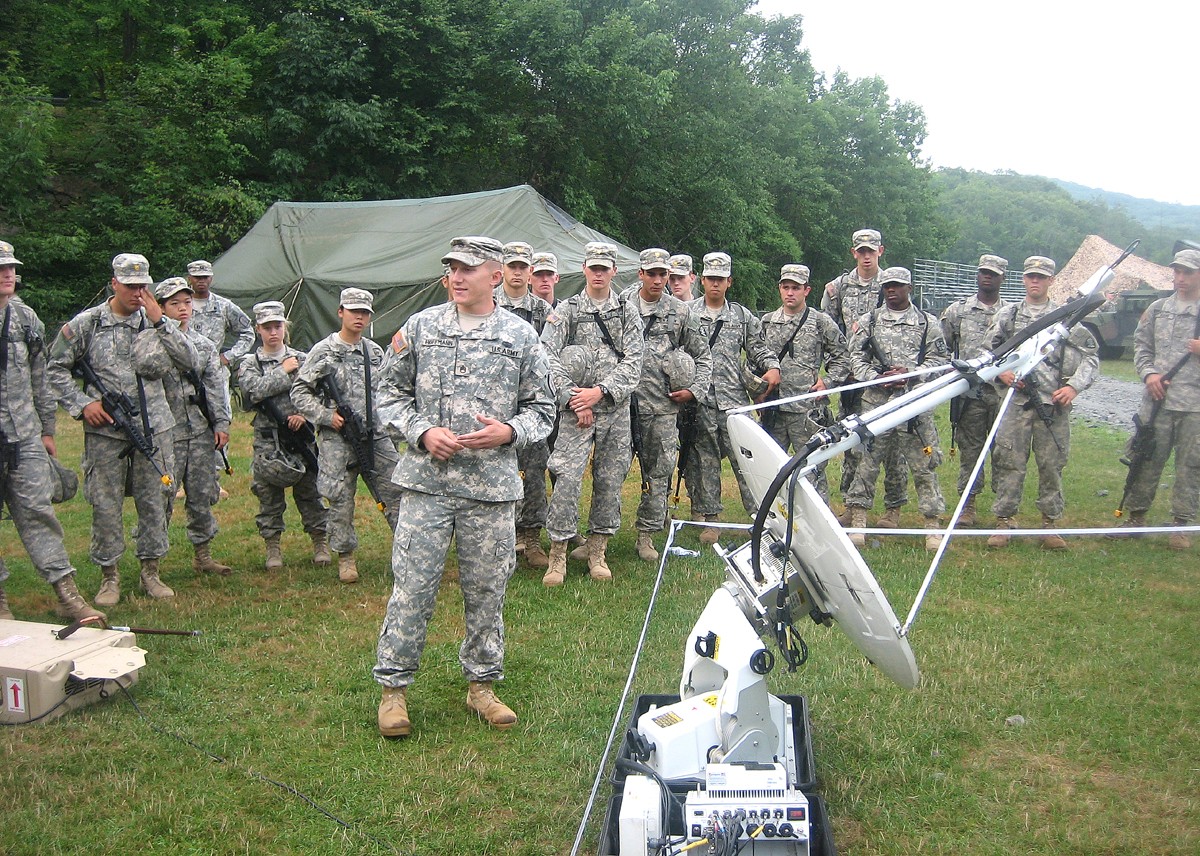
WEST POINT, N.Y. (July 29, 2010) -- Education doesn't stop at the end of an academic semester at West Point. Summer training usually engages the bulk of the Corps of Cadets either learning or leading basic and advanced Soldier skills. During the recently-concluded Cadet Field Training, many cadets were educated on what may soon become their future career field.
The summer training included demonstrations from combat, combat support and combat service support branches, such as field artillery, engineers and infantry. Soldiers from the 112th Signal Battalion (Special Operations) (Airborne) from Fort Bragg, N.C., were in attendance to show cadets that Signal is more than just radios and a commo check.
"What makes this unique is that these Soldiers are from a Special Forces and Airborne unit," Capt. Dominick Wilkinson, Department of Military Instruction, who coordinated the support from the 112th, said. "I would say that 90 percent of the cadets didn't realize that there are Signal Corps Soldiers who are Special Forces. We do it all and we're located everywhere."
Representing the Signal Corps were Capt. Chris Oliver, Staff Sgt. Dennis Hoffman and Spc. Marc Vielma from the "Shadow Warrior" battalion. They introduced hundreds of cadets to a static display with state-of-the-art communications equipment and explained how today's Army uses more than the traditional gear cadets may be currently using during training.
The Soldiers demonstrated rapid insertion special operations Signal Corps capabilities, to include use of the satellite communications radio and the Special Operations Forces Deployable Node.
Oliver, a West Point Class of 2002 graduate, presented cadets with a Signal Corps video and answered questions on a wide range of topics. Cadets were interested in not only how the Signal Corps operates within the Army, but the skills that can be transferred to the civilian work force. The branch orientation was organized through the U.S. Military Academy's Department of Military Instruction.
According to Wilkinson, this was the first time Cadet Field Training included dedicated blocks of time over three days for cadets to learn about the Signal Corps.
"We needed all three days to get all eight companies through the static display and the following discussions with the Soldiers," Wilkinson said. "This was basically just to get their juices flowing and to show them there are more branches out there other than infantry. We just wanted to show them, 'This is the Signal Corps and this is what we do for the Army.'"

Social Sharing